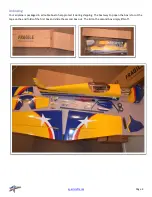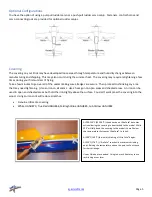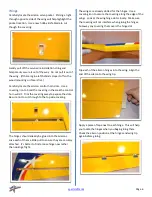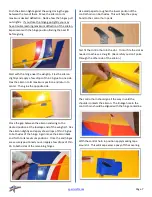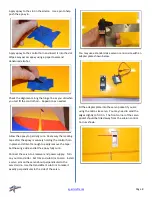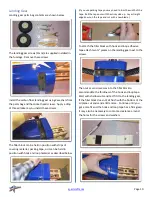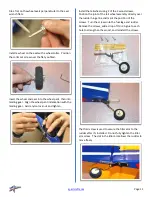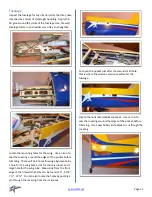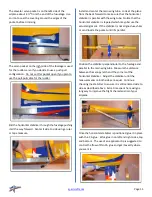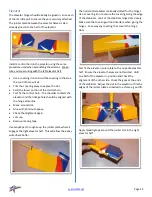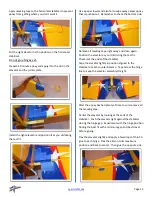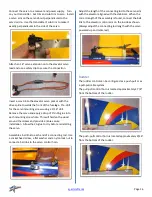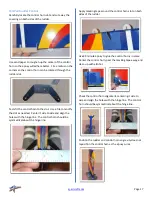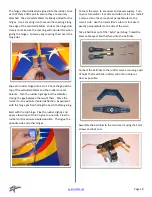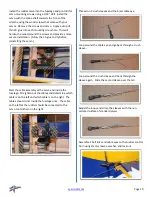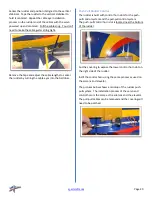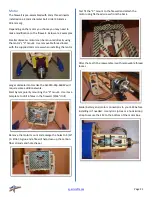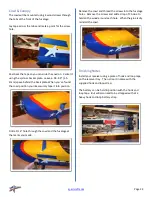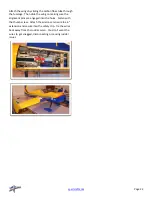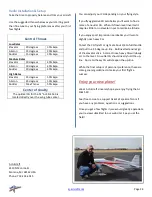
Page 18
The hinges should already be glued into the rudder. Give
each of them a little pull to ensure they are securely
attached. The vertical stabilizer is already slotted for the
hinges. Use a covering iron to secure the covering along
the edge of the vertical stabilizer. Look at the hinge slots
closely to make sure the covering will not interfere when
gluing the hinges. Cut away any covering that covers the
hinge slot.
Slip each rudder hinges into a slot. Check the gap at the
top of the vertical stabilizer and the rudder counter
balance. Push the rudder tight against the stabilizer
closing the gap between the two of them. Move the
rudder to its maximum desired deflection. Experiment
with the hinge position finding the best fit before gluing.
Start with the top hinge. Flex the rudder slightly and
apply a few drops of thin CA glue to one side. Flex the
rudder to its maximum desired position. Then glue the
opposite side and other hinges.
Connect the servo to a receiver and power supply. Turn
on your transmitter. Set trim and sub trim to zero. Install
a servo arm on the servo about perpendicular to the
servo
’s
side. Use the transmitter’s sub trim to make it
exactly perpendicular to the side of the servo.
Take 2 ball links o
ut of the “Extra” parts bag.
Tread the
brass cable eyes about half way into the ball links.
Connect the ball links to the rudder servo arm using a pair
of holes that match the rudder control horn holes as
close as possible.
Assemble the ball links to the control arm using the 2mm
screws and lock nuts.

